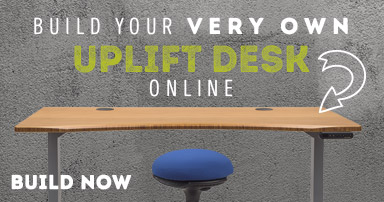Steelcase Amia Chair Editorial Review
Posted by Human Solution on Feb 12th 2009
The Steelcase Amia chair has the benefit of being younger sibling to the Leap and Think chairs. Much of the innovative technology utilized in those chairs has been incorporated or even improved upon in the Amia. The most notable of these features are the Live-Back technology and the 4-way adjustable arms.
The Amia chair is warranted for users up to 300lbs for 24/7 use and has a range of adjustments that accommodate body types well outside of the respectable 5th to 95th percentile user range we aim for. What is the 5th to 95th percentile? This is a chair I love to recommend for petite women and shorter men as well.
Most importantly, the limited points of manual adjustment mean you can set the Amia to fit your body and forget about it.
The Good
The dynamic adjustments incorporated into the Amia seat and back follow users without the need to fiddle with release levers or locks, and an easy to reach tension knob lets you dial in the recline to fit your taste. The one-piece adjustable lumbar support is a welcome improvement over the two-piece design on the Leap. This design has a studier feel and ensures a level lumbar support across the entire back. The waterfall seat edge flexes with your weight to help reduce pressure on the legs and increase blood flow.
The arms are my favorite feature on the Amia chair. Their 4-way adjustment is unique in the ergonomic chair marketplace. The standard Amia arms adjust 4 inches up and down, 2 1/4 inches in and out, 3 inches forwards and backwards, and pivots inward and outward up to 30 degrees. In my opinion Steelcase has the best chair arm design on the market.
The Bad
While the Amia utilizes the same Live-Back technology as the more expensive Leap and Think chairs, some sacrifices were made on flexibility. The recline does follow a natural arc, keeping the arms flat and line of sight clear, but the back and mechanism do not track with the same amount of detail as the more expensive Leap chair. I do prefer the Leap’s back, but ultimately it’s a minor sacrifice that is probably just me nitpicking.
The Bottom Line
In the sub-$600 price range, the Amia has few if any competitors for top honors in the mid-priced market. The dynamic adjustments rival those of chairs that cost hundreds of dollars more, and no one makes adjustable arms like Steelcase. What this means is you get the Steelcase name and Leap chair technology at two-thirds of the Leap chair cost.




